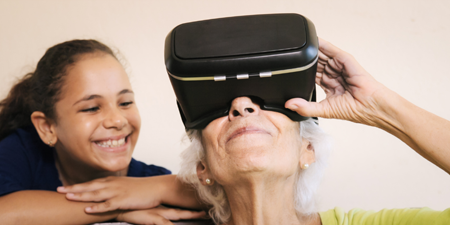SIMULATION AND IMMERSIVE TECHNOLOGIES
The Simulation and Immersive Technologies Area at ITCL is focused on developing advanced solutions based on Virtual, Augmented, and Mixed Reality, applied to sectors such as industry, training, heritage, construction, and tourism. Through R&D&I projects, we design virtual experiences that safely, interactively, and effectively simulate real-life situations—such as machinery handling, vehicle driving, or action in hazardous environments.
A key pillar of the area is its multidisciplinary approach, combining technology, research, and creativity. Our technical team works closely with a specialised group of digital artists—designers, 3D modellers, and animators—who contribute visual realism, aesthetic coherence, and graphic quality, which are hallmarks of our immersive solutions.
We also develop applications tailored to the challenges of Industry 4.0, such as interactive training environments, assisted maintenance tools, or advanced process visualisation—enhancing operational efficiency and decision-making.
Our commitment is to offer innovative, useful, and visually appealing technological experiences, aimed at facilitating digitalisation across sectors and improving people’s training, safety, and productivity.
CAPABILITIES IN SIMULATION AND IMMERSIVE TECHNOLOGIES

Driving Simulators
The goal of driving simulators is to provide comprehensive training—practice and behavioural analysis—while avoiding risks
The great advantage of these driving simulators for special vehicles is that they allow training for all special or risky situations that may occur in real life without posing any danger to people or equipment.
The simulators aim to reproduce the sensations that would be experienced if we were actually in the simulated environment. These sensations include visual, auditory, physical, and other environmental cues, enabling the study of behaviors and actions that would otherwise not be possible to explore safely.
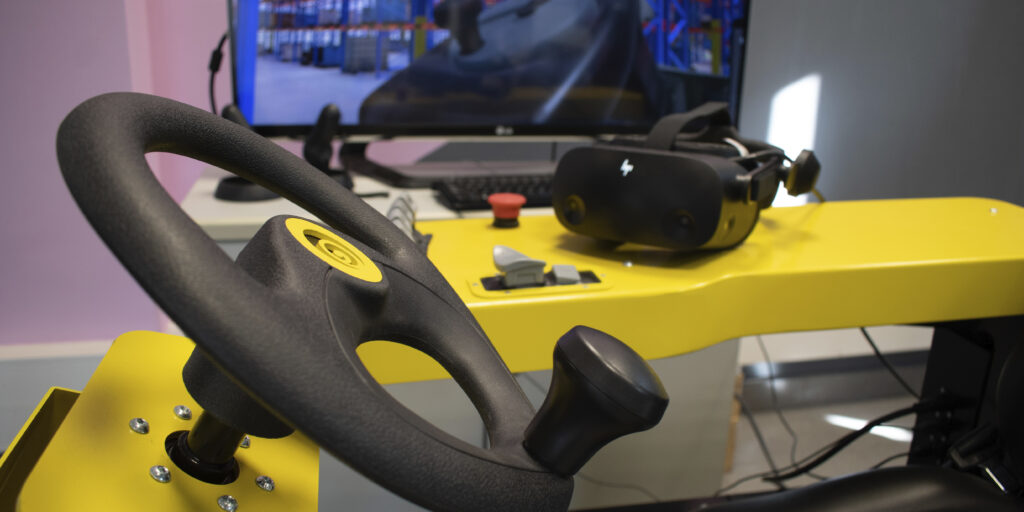
Virtual Reality Training Simulators
Virtual Reality places us in an immersive environment that allows us to interact with the surroundings in a safe way.
This technology is highly useful for training, as it provides a safe environment without the need for large infrastructures.
The greatest advantage of using Virtual Reality for training is that it only requires a VR headset and a computer.
Training simulators are characterized by realistic 3D graphics so that users can find similarities between the virtual environment and the real machinery, making it easier to adapt to using the actual equipment.
By recording the user’s movements, the examiner or trainer has greater control over the student’s attention and behavior, response times, and the types of responses to both normal and risky situations.
This type of application allows us to train workers for their future job positions even before the production lines are available, using design blueprints and operating modes.
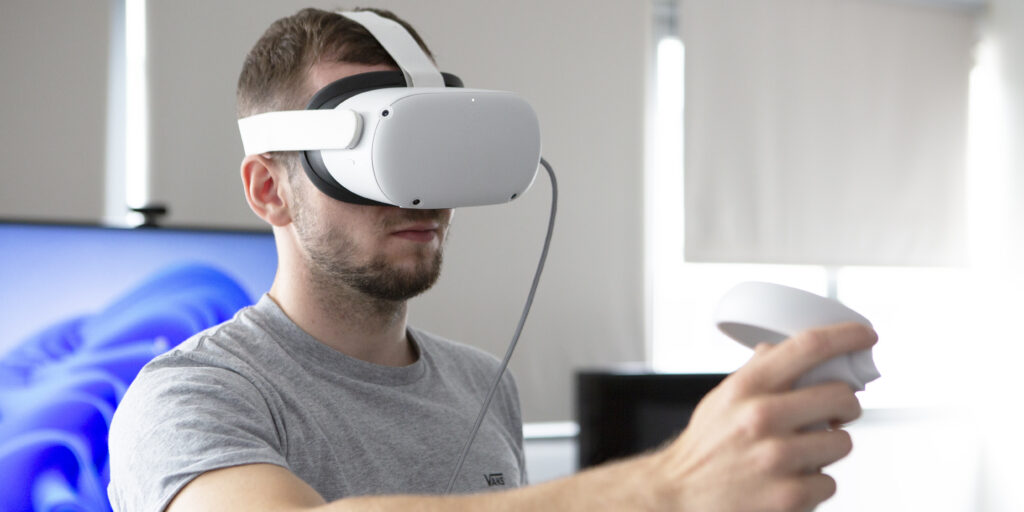
Virtual Reality Experiences
We can recreate any experience in an immersive and interactive way using virtual reality for marketing, heritage, architecture, gaming, and more.
Virtual Reality offers an immersive experience that closely resembles a real-life situation. Users can easily get a sense of what a real environment is like without needing to be there or even visit places that no longer exist.
Any type of scene can be recreated, whether through rendered environments or 360º photos/videos. Additionally, these environments can be interactive for the user.
It allows real environments to be replaced, with the added benefit of making changes at a lower cost and with faster execution. It can also be enjoyed from anywhere.
By tracking user movements, it is possible to analyze attention, emotions, and behavior in different situations — highly valuable information for neuromarketing.
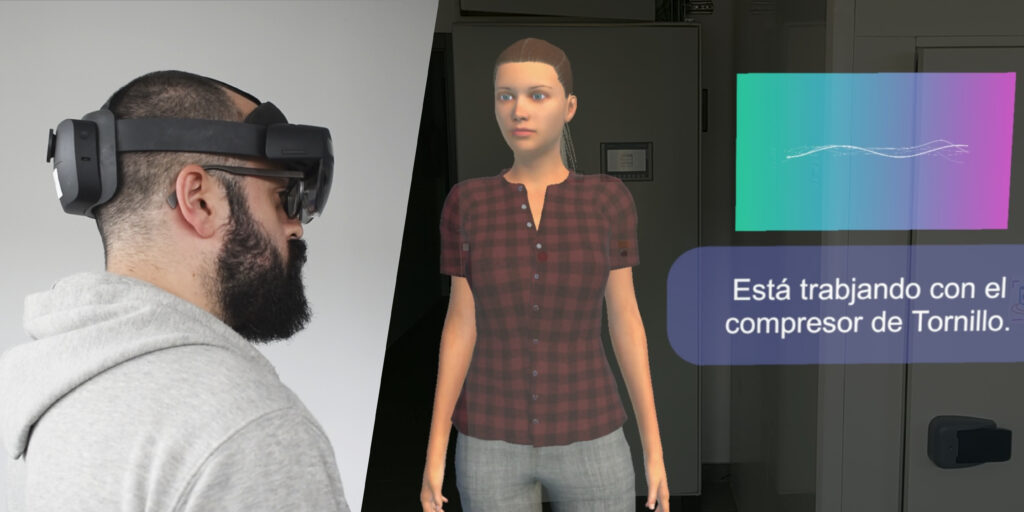
Advanced Applications in Augmented/Mixed Reality:
Augmented/Mixed Reality allows us to blend the real world with a virtual one through the use of a device.
This technology enables us to overlay visual layers of information onto the real world around us, using devices such as our own smartphones. It helps us create experiences that provide relevant knowledge about our surroundings, and we receive that information in real time.
Through Augmented/Mixed Reality, the virtual world merges with the real one in a contextualized way, always with the goal of better understanding everything around us.
A doctor can see a patient’s vital signs while performing surgery; a tourist can raise their camera and discover points of interest in the city they’re visiting, simply by pointing at the places they want to explore; or a technician can carry out maintenance tasks in a machine room, obtaining information about the location of each component just by pointing with their tablet—without needing to consult a manual.

3D Audiovisual Solutions
We create high-quality 3D productions tailored to our clients’ needs, ranging from interactive environments and renders to animations, infographics, and cultural or educational content.
The 3D technology we use allows us to recreate scenarios and products with exceptional detail and realism, delivering high-quality immersive experiences for XR applications, augmented reality, virtual reality, and other interactive environments powered by real-time graphics engines.
We develop conceptual prototypes to visualize, evaluate, and present ideas in an attractive and accurate way—covering everything from industrial designs to creative concepts for marketing, training, or simulation. Additionally, we produce promotional content through impactful renders and videos that enhance commercial presentations, training materials, and visual strategies. Our content is adaptable to any target audience, as we are capable of working in a variety of styles, from hyper-realistic approaches to cartoon or stylized aesthetics.
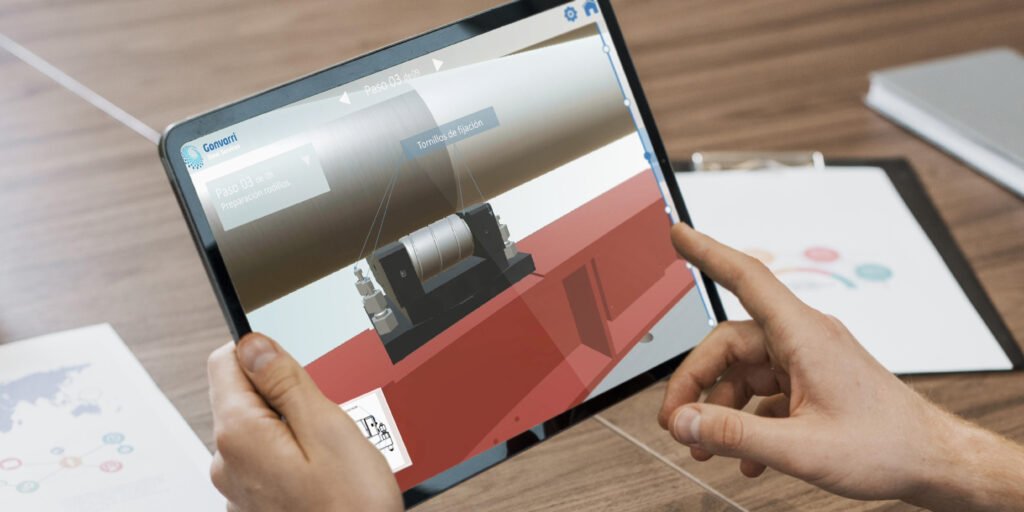
Interactive Manuals
These manuals allow us to obtain visual information about the operation of any machine through 3D models, interactive animations of how it works, or explanatory videos.
Interactive manuals are very useful for training and maintenance, as they provide operators with multimedia support for understanding the machine they are working with.
Within an interactive manual, we can find information about the plant and its equipment, the processes and principles behind each machine, or the simulation of frequently occurring abnormal scenarios, as well as how to resolve them.
The manual can be hosted on a digital platform where the content can be regularly updated and customized for each user.
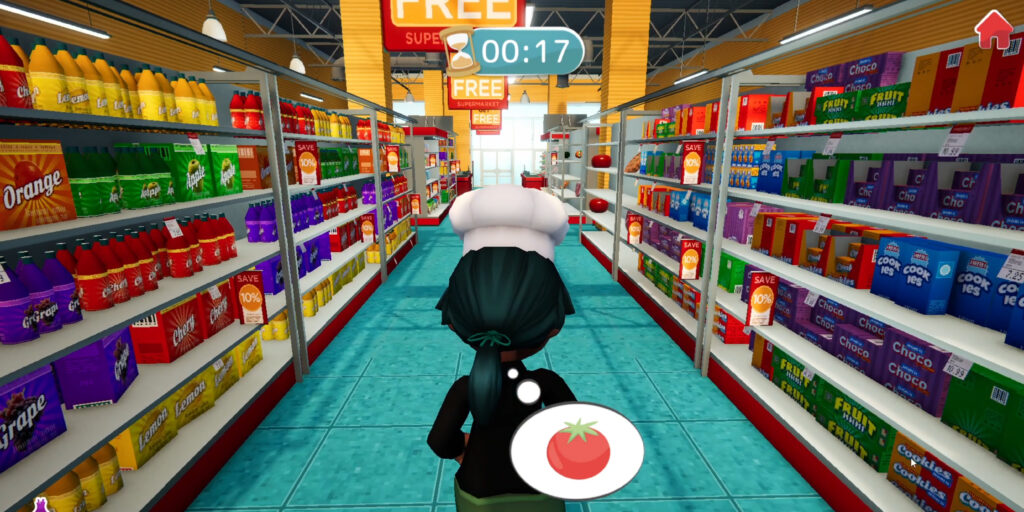
Serious Game
Serious Games are games designed with a formative purpose, allowing users to learn how to perform certain tasks through gamification.
The term “serious” refers to video games primarily used in the educational, scientific, healthcare, urban planning, and engineering sectors, among others.
Serious games are designed to teach. They are video games and applications with an educational background.
They are a powerful tool for companies, using gamification elements to create a positive and educational experience around something that might not be engaging on its own.
The main goal is to achieve the company’s objective in an enjoyable way — for example, through a welcome manual, learning a specific protocol, or simply conveying brand values and reinforcing branding.

Synthetic Data Generation
We have advanced tools for generating labeled images and videos used to train computer vision models, utilizing virtual environments that accurately and controllably replicate real-life situations.
OUR TEAMS
Javier Melús Carruez
Head of Simulation, VR and AR
Computer Engineer. Expert Unity 3D programmer. Senior developer of Android and iOS applications using Eclipse, Android Studio, Xcode, or Unity 3D. Experienced in game programming and development. Since 2012, he has developed mobile apps and games for Android and iOS. He also has extensive teaching experience in video game programming and virtual reality environments for mobile application development with Android.
Experience as CEO and entrepreneur (founding his own video game development company). He has worked as head of programming and projects in various national companies for game development. Broad teaching experience.
As the head of the Simulation, Virtual Reality, and Augmented Reality Area at ITCL, he coordinates a multidisciplinary team (computer and telecommunications engineers), Unity developers programming in C#, Unreal C++, or SQL, Python, and Java, to carry out national and European R&D projects.


Sergio Peña Varga
Head of Art
2D/3D artist with over 20 years of professional experience in various sectors related to art and design. He began as a traditional 2D animator, mainly for advertising production companies, a stage that helped him develop skills he would later apply as a 3D artist in diverse simulation, VR, and AR projects.
He has broad experience across the 3D production pipeline, from concept to final product, working closely with clients and teams to achieve outcomes that meet expectations and provide a unique, innovative vision. He specialises in production areas such as modelling and texturing for real-time graphics, lighting, digital sculpting, and 3D animation. As a UX/UI designer, he focuses on visual design and defining user experience.
He leads the artistic direction of the entire creative process, from conceptual stage to final design, coordinating a multidisciplinary team of creatives and artists who visually capture the required concept.
RESEARCH PROJECTS IN SIMULATION AND IMMERSIVE TECHNOLOGIES
PREVENT – Prevent Cancer by Managing Childhood Obesity
PREVENT enhances the scale-up of primary interventions for weight control during childhood and adolescence to reduce cancer risks in adulthood
Duration: 2023-2027
HosmartAI – Intelligent Hospital Development
The HosmartAI project will create a common open integration platform, with the necessary tools to facilitate and measure the benefits of integrating digital technologies (robotics and AI) into the healthcare system.
Several large-scale pilot projects will make it possible to evaluate the various improvements in several hospital environments:
Medical diagnosis, surgical interventions, disease prevention and treatment, rehabilitation support and long-term care.
Duration: 2021 - 2024
SMART NOC – Intelligent Network Control Management
SMART NOC focuses con integrating cutting-edge digital technologies to enhance the efficiency and security of network control centers. Intelligent network control center management is essential for modern communication networl operations.What is SMART NOC? This...
VIRTUALIZA – Virtual Training Platform for SME´s
Virtualiza arose from the need to offer more personalised training to users with certain dependencies or functional limitations, such as the elderly and people in vulnerable situations in general
Duration: 2021-2022
AgrarIA – AI in Agriculture: Enhancing Production Efficiency
Research into the entire value chain of agricultural production through systems governed by artificial intelligence, with CO2 reduction, energy sustainability, productivity and competitiveness.
Duration: 2021-2024




